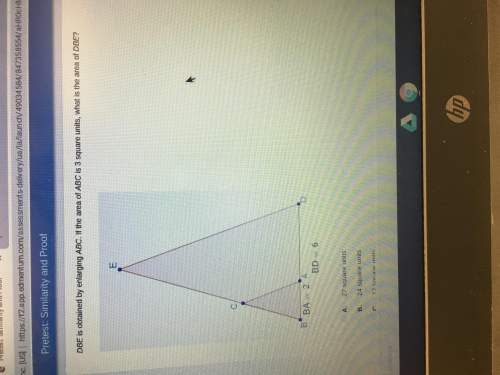
Mathematics, 13.05.2021 17:20 jghdvine
The graph shows the function f(x) = 32•(1/2)^x – 2 What is the value of the inverse function f^-1 at x=2?

Answers: 2


Another question on Mathematics

Mathematics, 20.06.2019 18:02
Determine the fraction of total interest owed. after the seventh month of a 12-month loan, the numerator is: {(n + 11) + (n + 10) + (n + 9) + (n + 8) + (n + 7) + (n + 6) + (n + 5)} = , and the denominator is: {(n) + (n + 1) + + (n + 11)} = . therefore, the fraction is numerator/denominator (to the nearest tenth) = %.
Answers: 3

Mathematics, 21.06.2019 15:40
Is it true that product of 3 consecutive natural numbers is always divisible by 6? justifyyour answer
Answers: 2

Mathematics, 21.06.2019 19:40
The weights of broilers (commercially raised chickens) are approximately normally distributed with mean 1387 grams and standard deviation 161 grams. what is the probability that a randomly selected broiler weighs more than 1,425 grams?
Answers: 2

Mathematics, 22.06.2019 01:10
Evaluate 8x2 + 9x − 1 2x3 + 3x2 − 2x dx. solution since the degree of the numerator is less than the degree of the denominator, we don't need to divide. we factor the denominator as 2x3 + 3x2 − 2x = x(2x2 + 3x − 2) = x(2x − 1)(x + 2). since the denominator has three distinct linear factors, the partial fraction decomposition of the integrand has the form† 8x2 + 9x − 1 x(2x − 1)(x + 2) = correct: your answer is correct. to determine the values of a, b, and c, we multiply both sides of this equation by the product of the denominators, x(2x − 1)(x + 2), obtaining 8x2 + 9x − 1 = a correct: your answer is correct. (x + 2) + bx(x + 2) + cx(2x − 1).
Answers: 3
You know the right answer?
The graph shows the function f(x) = 32•(1/2)^x – 2
What is the value of the inverse function f^-1 a...
Questions

Mathematics, 27.01.2020 03:31


Chemistry, 27.01.2020 03:31


Mathematics, 27.01.2020 03:31

Mathematics, 27.01.2020 03:31


Mathematics, 27.01.2020 03:31

History, 27.01.2020 03:31



History, 27.01.2020 03:31

Geography, 27.01.2020 03:31

Biology, 27.01.2020 03:31

Mathematics, 27.01.2020 03:31

Mathematics, 27.01.2020 03:31

Chemistry, 27.01.2020 03:31



Mathematics, 27.01.2020 03:31





